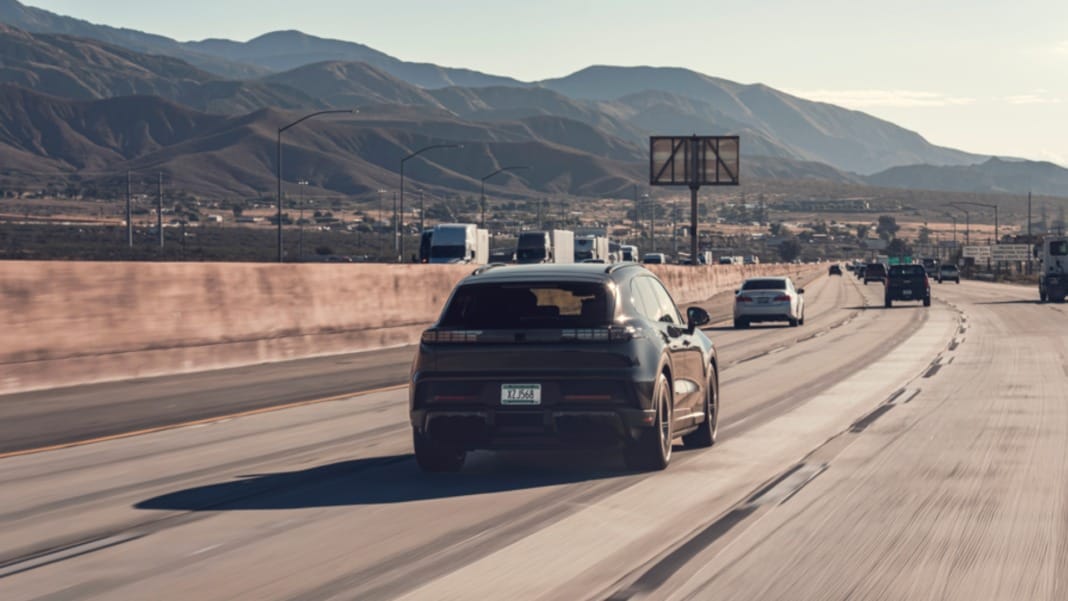Porsche has detailed the advanced high-voltage system that will power the new all-electric Cayenne, marking a significant step forward in the brand’s E-Performance strategy. The SUV, which will be launched in the coming weeks, features an innovative battery design, dual cooling system, predictive thermal management, and rapid charging capabilities. These technologies collectively enhance driving dynamics, efficiency, and usability for everyday and long-distance travel.
Built on the latest evolution of Porsche’s in-house Premium Platform Electric (PPE), the Cayenne Electric uses an 800-volt electrical architecture to deliver high power output and efficient energy use. The system supports charging speeds of up to 400 kW, allowing the battery to go from 10 to 80 per cent in less than 16 minutes. During real-world range tests in the US, near-production prototypes covered more than 563 kilometres on a single charge at highway speeds, confirming the SUV’s long-distance performance.
Dr Michael Steiner, Deputy Chairman of the Executive Board and Member of the Executive Board for Research and Development, said, “With the Cayenne Electric, we are taking e-performance to a new level. Our innovative high-voltage system combines maximum efficiency with the driving dynamics typical of Porsche.”
A battery that is part of the structure
At the heart of the Cayenne Electric lies a function-integrated battery with a gross capacity of 113 kWh. Uniquely, it forms part of the vehicle’s structural framework, reducing overall weight and improving rigidity. This integration enhances safety and stability while lowering the centre of gravity, resulting in sharper handling and improved agility.
The new design also improves the ratio between battery cells and housing by 12 per cent compared to the Taycan’s second-generation system. The modules are made of a specially engineered aluminium profile that absorbs impact energy, protecting the cells during collisions.
The battery uses six interchangeable modules and 192 large-format pouch cells made with a graphite-silicon anode and a nickel-manganese-cobalt-aluminium cathode. With a nickel content of 86 per cent, the chemistry offers 7 per cent higher energy density than before. The use of silicon improves fast-charging capability, while aluminium reinforces the structure, increasing both efficiency and durability.
Advanced cooling and predictive management
Porsche has introduced a new double-sided cooling system that controls battery temperature from both above and below. The setup delivers the cooling power of around 100 household refrigerators, ensuring consistent performance regardless of driving conditions or ambient temperature. Energy-efficient pressure fans further reduce power consumption by about 15 per cent compared to conventional systems, maintaining peak performance while minimising energy loss.
Supporting this hardware is an intelligent Predictive Thermal Management system that integrates all heating and cooling circuits across the vehicle. The system continuously analyses temperature, route, and driving behaviour to maintain the battery within its optimal temperature range. It anticipates energy needs based on navigation, topography, and traffic data, enabling faster charging, more accurate range estimates, and improved battery lifespan.
“The function-integrated battery, the double-sided cooling concept, and the predictive thermal management demonstrate how we think comprehensively about technology,” said Dr Steiner. “Our aim is to provide electric mobility in a way that befits Porsche – efficient, powerful and engaging at the same time.”
Fast and convenient charging for everyday use
The Cayenne Electric can charge up to 400 kW at compatible high-power stations, allowing drivers to add 300 kilometres of range in just 10 minutes. Its fast-charging rate remains consistent between 350 and 400 kW up to around 50 per cent state of charge. This performance is achievable from battery temperatures as low as 15°C, ensuring reliable charging in varying climates.
In addition, the 800-volt setup and built-in high-voltage switch allow efficient charging at 400-volt stations at up to 200 kW without the need for a booster.
From 2026, Porsche will also offer the new Porsche Wireless Charging system for the Cayenne Electric. This 11 kW inductive setup enables cable-free charging with efficiency levels of up to 90 per cent. When parked above the compact charging pad, the SUV automatically detects and lowers itself slightly to begin charging, with the process monitored through the My Porsche app.
The system, which is fully automatic and maintenance-free, reflects Porsche’s commitment to combining performance, efficiency, and convenience in its electric future.





